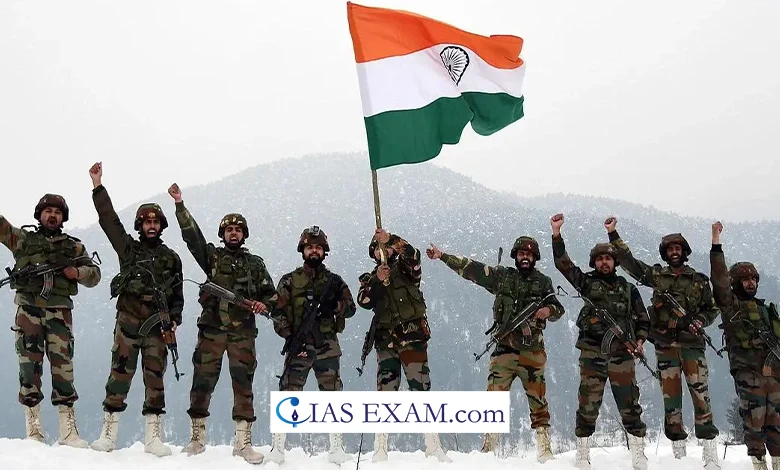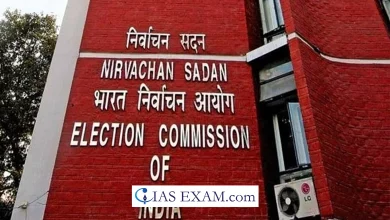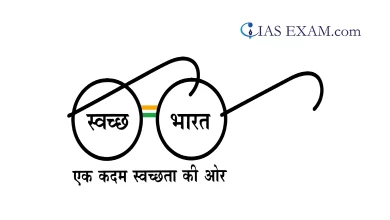Technological Absorption with the Indian Army
GS Paper 3 - Defence, Indigenization of Technology

Context
The year ‘2024’ is being observed by the Indian Army as the ‘Year of Absorption’. It underscores the Indian Army’s focus on embracing technology to transform itself and to keep itself ahead in the context of the evolving character of warfare.
The absorption will be mainly in terms of disruptive technology (DT) comprising artificial intelligence (AI), autonomous weapon systems such as drones, sensors, robotics, space technology, and hypersonic weapon systems.
Disruptive Technology in Defence
- Disruptive Technology refers to those innovations that significantly alter the existing landscape of industries or sectors, often rendering the previous technologies obsolete and reshaping traditional practices.
- In the defence sector, Disruptive Technology has the capability to revolutionize warfare, redefine military capabilities and transform the dynamics of national security.
- Such Technologies often emerge from rapid advancements in fields such as artificial intelligence, robotics, cybersecurity, nanotechnology, and biotechnology, leading to exponential improvements in military capabilities.
- Disruptive technologies may offer cost-effective solutions compared to traditional systems, enabling militaries to achieve greater effectiveness with reduced resources.
Examples –
Unmanned Aerial Vehicles (UAVs): UAVs, commonly known as drones, have revolutionized military reconnaissance, surveillance, and strike capabilities.
Cyber Warfare: Cyber warfare involves the use of computer networks to disrupt, disable, or sabotage enemy systems and infrastructure.
Hypersonic Weapons: Hypersonic weapons travel at speeds exceeding Mach 5, making them extremely difficult to intercept and providing a rapid-strike capability against distant targets.
Challenges in Technology Absorption:
- Low R&D Expenses – India’s lack of focus on defence R&D and low overall researcher density have resulted in India being unable, thus far, to develop any breakthrough military technology or weapon system and remains amongst the largest importers of military equipment in the world.
- No Relevance of Technological Depth – The vendor (under DAP-2020) may offer transfer of technology not directly related to the product or system being procured. Hence, the offers from foreign vendors need very careful and in-depth scrutiny to ensure that the technology being offered is relevant to defence applications both current and futuristic.
- Licensing Issues – Frequently, the technology in question is subject to foreign government permission, making it impossible to access the most recent technology. In many sectors of cutting-edge technology, foreign suppliers refuse to share their technologies, claiming patents, IPRs, and so on, or charge exorbitant costs for them.
- Cybersecurity Issues – The military sector’s increasing dependence on digital technology and networked systems makes it vulnerable to a variety of cyber threats and assaults. There is a lack of strong cybersecurity frameworks, incident response processes, and preparation to address increasing cyber hazards.
- Technological Expiry – The equipment and platforms utilized by the Indian military have extended service lifetimes, creating a mismatch with the rapidly changing technological world. Delayed modernization and upgrade plans result in the armed forces working with progressively antiquated systems.
Measures to Ensure Smooth Technology Absorption
- Technological and Operational Adaptations – In wartime, technical countermeasures swiftly restrict the performance of an adversary’s modern technology-enabled weaponry. The most crucial modifications are frequently operational and tactical in nature, referring to how a force fights at various levels.
- Understanding Potential of Latest Technology – An awareness of the most recent technologies, their potential, and the environment in which they can be used is critical. The absorption must present itself visibly at the unit level, rather than being regulated primarily at higher levels.
- Integrating at Unit-Level: Ensure that technology absorption is not limited to higher levels of command but is visibly manifested at the unit level. Democratize the use of technology to empower frontline personnel.
- Macro-Level Aspects: Address macro-level aspects such as organizational restructuring, human resource management, cultivation of specialists at various levels, civil-military fusion, data integrity management, and procurement policies tailored for Defense Technologies (DTs).
- Learning from Recent Wars: Analyze lessons learned from recent and ongoing conflicts to inform future planning and decision-making like the Russia Conflict.
Conclusion
Successful technology adoption in the military sector necessitates a holistic strategy that covers not just technological issues but also organizational, human resource-related, and policy concerns. It is critical to focus on organizational reorganization, human resource management, expertise decentralization, civil-military fusion, data integrity, and the implementation of procurement procedures appropriate for disruptive technologies.
SOURCE: The Hindu





.png)



